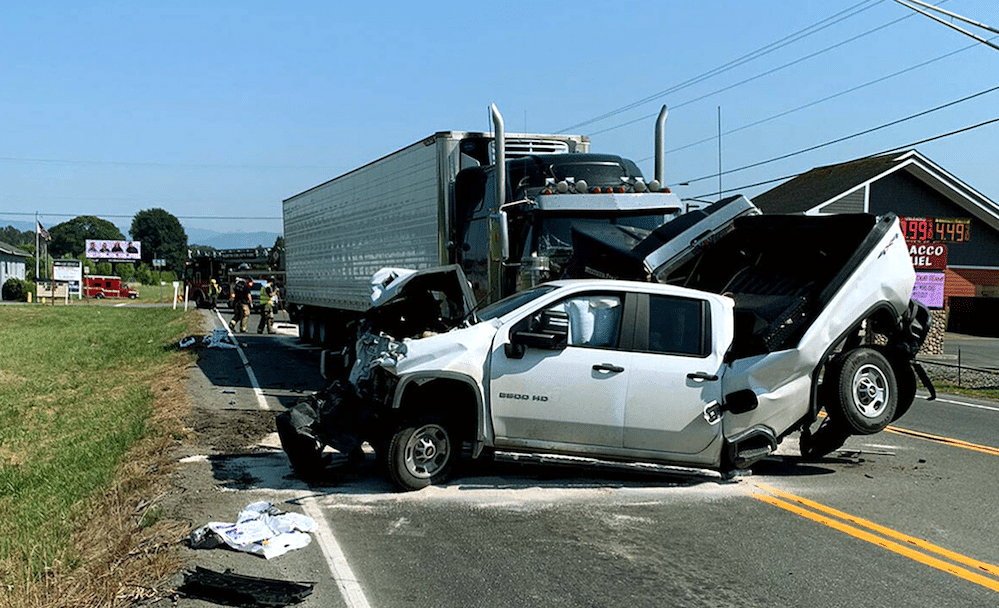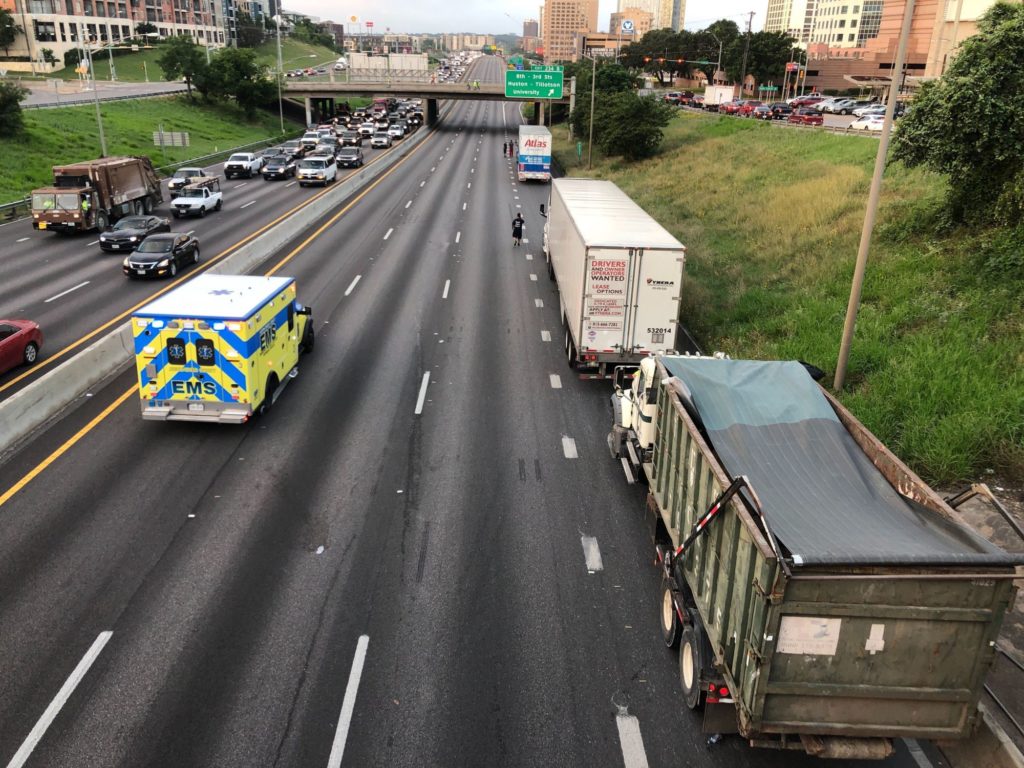Were You In An 18-Wheeler Accident? Here’s What To Know About the ‘Black Box’
Author: Written by Funk & Associates Personal Injury Lawyers
18-wheeler drivers are responsible for carrying potentially millions of dollars worth of goods as they travel across the country. Of course this does not include the value of the truck itself or the cost of liability in the event of a wreck.
Did you know that an 18-wheeler has a computerized system that records data in case the vehicle is in an accident? Because there is so much money on the line, virtually all tractor trailers have a data-gathering “black box” installed. This data will be crucial in the event of a truck accident.
Accident victims are usually not aware of this, and trucking companies don’t want you to know about it since the data could reveal a truck driver’s liability.
The 18-wheeler truck accident attorneys at Funk and Associates would like to share important need-to-know information about 18-wheelers and the type of “black box” systems that each truck has.
If you are in a semi-truck wreck, it is important that you speak with an experienced 18-wheeler accident attorney as soon as possible. At Funk and Associates, we have deep experience taking on trucking companies to get our clients the compensation they deserve. One of the first steps we always take is getting the data from the black box, which can provide a wealth of information for your case.
What Is The ‘Black Box’ In An 18-Wheeler?
A “black box” in the context of commercial vehicles refers to a computerized device installed in these vehicles to document their driving record and record movements. This device is crucial in providing key evidence regarding a truck’s location and events leading up to a crash.
While some commercial trucks have a continuous recording black box, others are equipped with a system that only activates and records in the event of a crash. The term “black box” is a general reference to various components of the computerized systems typically found in commercial motor vehicles, including 18-wheelers, and they are designed to monitor driver safety and truck status.
There are a few devices that would be considered part of the “black box” computerized systems for an 18-wheeler. These systems are electronic control modules (ECMs), electronic logging devices (ELDs), and event data recorders (EDRs).
Electronic Control Modules
Electronic Control Modules (ECMs) serve as the central computer systems that govern the operation of modern truck engines. They consist of multiple separate computers and sensors that monitor and control engine and vehicle performance. This includes critical functions such as fuel injection timing, transmission operations, anti-lock brake systems, traction control, and more.
Key features and functions of ECMs include:
- Check Engine Light: ECMs are responsible for signaling the “check engine” light to alert drivers when an issue is detected. This indicator prompts vehicle owners to seek diagnostic testing from mechanics.
- Fault Codes: ECMs generate “fault” codes that mechanics can access for diagnostic purposes. These codes provide insights into engine problems, facilitating accurate identification and resolution.
- Data Recording: ECMs record a vast array of information, including engine speed, temperature, tire pressure, emissions, oxygen ratio, transmission temperature, battery information, and more.
- Fuel Injection Timing: One crucial function of ECMs is to monitor and control the precise moment when fuel is injected into the combustion chamber.
- Sensor Integration: ECMs integrate various sensors that monitor coolant temperature, intake air temperature, throttle position, and engine RPM. This information helps optimize engine performance.
- Communication with Other Systems: ECMs communicate with other computer systems responsible for anti-lock braking, traction control, and transmission operation.
Electronic Logging Devices
An Electronic Logging Device (ELD) synchronizes with the engine of an 18-wheeler to automatically record driving data. It captures information such as when a truck’s engine is running, when the truck is in motion, and the distance traveled within a specific timeframe.
The primary purpose of an ELD is to assist drivers in complying with the hours-of-service (HOS) regulations enforced by the Federal Motor Carrier Safety Administration (FMCSA). These regulations dictate the maximum number of hours a truck driver is allowed to drive each day, ensuring they have sufficient rest periods.
Key features and functions of ELDs include:
- Automatic Data Recording: ELDs automatically record essential data related to engine status, vehicle movement, and mileage.
- HOS Compliance: ELDs help drivers adhere to HOS regulations by tracking and documenting their driving hours accurately.
- Data Transfer: Commercial truck drivers are required to transfer their driving data to safety officials for review. This process ensures compliance with HOS regulations, and any violations can be flagged for further investigation.
- Replacement for Handwritten Logs: In the past, drivers relied on handwritten logs to record their driving hours. ELDs have replaced this manual process, providing more accurate and reliable data.
- Fatigue Prevention: The main goal of electronic logging devices is to enhance road safety by preventing tired drivers from operating 18-wheelers. By accurately monitoring driving hours, ELDs contribute to a safer working environment for truck drivers and other road users.
Event Data Recorders
Event Data Recorders (EDRs) serve as the electronic systems commonly referred to as the “black box” in an 18-wheeler. These devices monitor specific information and record data about the vehicle in the moments leading up to an “event,” typically a crash.
Key features and functions of Event Data Recorders include:
- Data Recording: EDRs capture crucial data about the truck’s speed, braking, and movements just before a crash occurs. Some systems may record continuously, while others activate when there is an indication of a potential crash.
- Regulatory Requirements: Following the Code of Federal Regulations (49 CFR § 563.7), EDRs are required to record specific data elements. These include information about frontal airbag deployment, the status of stability control (on, off, or engaged for traction), the speed of the vehicle before a crash, sudden braking events, whether the driver was using a seatbelt, and the number of crash events.
- Mandatory Installation: In 2012, the National Highway Traffic Safety Administration (NHTSA) mandated that all vehicles sold in the United States must be equipped with an EDR. This mandate ensures that vehicles are equipped with the capability to record critical data that can be essential for understanding the circumstances surrounding an accident.
The information recorded by EDRs is instrumental in investigating accidents and determining the specifics of what occurred during a crash. It provides valuable insights into the vehicle’s condition, the driver’s actions, and other relevant factors, contributing to a comprehensive understanding of the incident. EDR data can be crucial in legal proceedings, helping to establish the sequence of events leading up to a commercial motor vehicle crash.
Why Commercial Black Boxes Are Crucial for 18-Wheeler Accident Victims
After a truck accident, the trucking company and its insurance companies will vigorously defend their interests and discourage claims. Insurance response teams are often dispatched promptly to the accident site, and legal representation may be mobilized within hours. These teams may attempt to influence the responding police officer and discourage the issuance of citations.
In this context, commercial truck black boxes play a crucial role. These devices contain valuable evidence that can provide insights into the actions of the truck driver and potential malfunctions in the vehicle. The data recorded by the black box can reveal if the driver was speeding, failed to brake before a collision, the precise moment of impact, and subsequent actions of the truck.
The black box serves as an objective source of proof, offering a detailed account of the events leading up to and following the collision. This data is essential in preventing the trucking company from shaping an alternative narrative about the incident. It becomes a key tool for those seeking to understand the true sequence of events and establish accountability.
As a result, the information retrieved from the commercial truck’s black box can build a strong personal injury case based on factual evidence and preventing attempts to distort the actual events of the accident.
Since black box data legally belongs to the trucking company, it can be erased, resulting in the permanent loss of evidence like the truck speed, braking, and trip history. An experienced Austin-area truck accident lawyer knows how to hold the trucking company accountable, which could mean the difference between winning and losing your case. We’ll make sure the trucking company hands over all black box data before it can be tampered with.
How Do You Get ‘Black Box’ Data After An Accident?
Texas has the most fatal commercial trucking accidents in the country, with hundreds of fatalities every year. That’s why trucking companies are adamant about keeping “black box” data from being used as evidence. With fewer facts presented at trial, a truck driver has a better chance of not being held accountable.
Trucking companies often strive to prevent the release of “black box” data during lawsuits. As an accident victim seeking access to this data, here are steps you can take:
- Legal Proceedings: If you decide to pursue legal action, particularly in a court case, you can request the semi-truck’s black box data during the discovery phase. Discovery is the pre-trial phase where parties involved can request information from the opposing side to use as evidence during the trial.
- Request for Production: Specifically, you can submit a formal request for the production of documents or data, seeking access to the “black box” data relevant to the accident. This legal mechanism allows you to obtain information that may be crucial for building your case.
- Contacting the Insurance Company: You may also directly contact the truck driver’s insurance company to request the black box data. This should be through your attorney. Remember, this data is typically stored for a limited time, so prompt action is advisable. In theory, this can be done pre-trial, but usually requires the filing of a lawsuit to actually happen.
Taking proactive steps with help from a law firm that specializes in trucking accidents can help you obtain the necessary information to support your case and ensure a fair resolution.
An Expert Austin 18-Wheeler Accident Lawyer
No matter what you are told, neither the truck company nor the truck driver will voluntarily admit fault up front. In the rare circumstance that they do, they will try and put some blame on you to minimize their liability.
Trucking companies and their lawyers are tough, but we are tougher. We know that anyone who has been in a truck accident has suffered physical trauma, mental anguish, lost wages, etc., and we are here to ease the legal process.
Give us a call at 512-472-3865 or contact us online today for a free, no-obligation consultation with an experienced Austin-area 18-wheeler accident attorney today.





